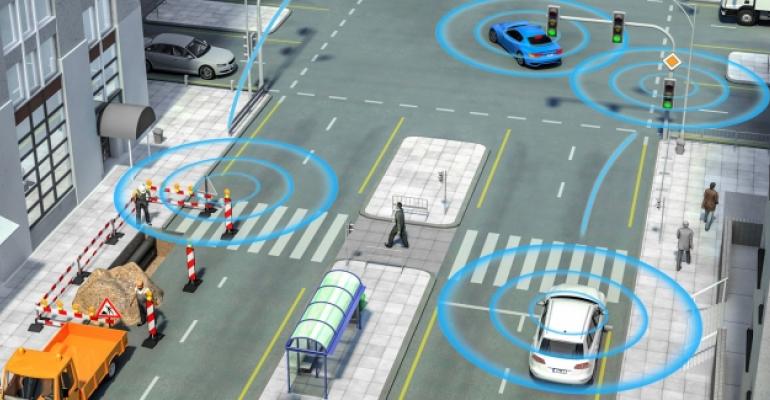One of the most important choices for those designing equipment and infrastructure for connected vehicles is: Which communications technology will they use?
There may be a wide range of possibilities in the future, but for now, there are two primary options: Dedicated Short Range Communications (DSRC) radio and 5GLTE wireless technology.
DSRC is the technology that is currently predominant in the U.S. connected-vehicle market. In fact, it is prescribed by federal regulators.
In Report and Order FCC-03-324, the Federal Communications Commission (FCC) allocated 75 MHz of spectrum in the 5.9 GHz band for use by ITS vehicle safety and mobility applications.
DSRC-based communications is a major research priority of the Joint Program Office at the U.S. Department of Transportation’s Research and Innovative Technology Admin.
In 2016, NHTSA initiated the rulemaking process for a mandate requiring that all cars sold in 2023 come equipped with DSRC-based V2V technology.
The ʼ17 Cadillac CTS sedan (the first mass-market vehicle to include V2V capability) uses DSRC technology. DSRC also enjoys strong support from the trade association Global Automakers, in which Honda, Nissan and Toyota participate.
There is, however, a technology that competes with DSRC: 5GLTE cellular communication. Volkswagen has announced all of its autonomous vehicles will be powered by 5GLTE, and the Chinese company Baidu recently completed a test of 5GLTE-enabled autonomous cars.
Some advocates in certain industries and companies are vocal about the perceived advantages of 5GLTE over DSRC, including greater interoperability, wider bandwidth, increased cybersecurity and a decentralized network that runs on private cell towers instead of dedicated roadside units that the government has to pay for and maintain.
Many argue that fully autonomous vehicles will not be feasible without widespread 5GLTE connectivity. Moreover, 5GLTE offers many of the same advantages for other Internet of Things and “smart city” applications, so development of the network is inevitable, whether or not it is used for cars.
Many of the perceived drawbacks of DSRC, though, will only manifest in the future. Right now, the federal DSRC mandate remains in place, but many V2V efforts remain centered on DSRC. There are no cars on the road that require 5GLTE or towers that provide it.
In the end, there may not be a binary answer; many have suggested DSRC and 5GLTE solutions will prove to be complementary rather than competitive, offering multiple sensor inputs for different levels of tasks and ultimately leading to a safer driving experience.
For now, the most important thing is to stay informed on the technological requirements for emerging vehicle technologies and remain flexible enough to adapt to changing trends. No one wants to end up building a Betamax car for a VHS network.
Brian Wassom is a partner at Warner Norcross + Judd LLP.





